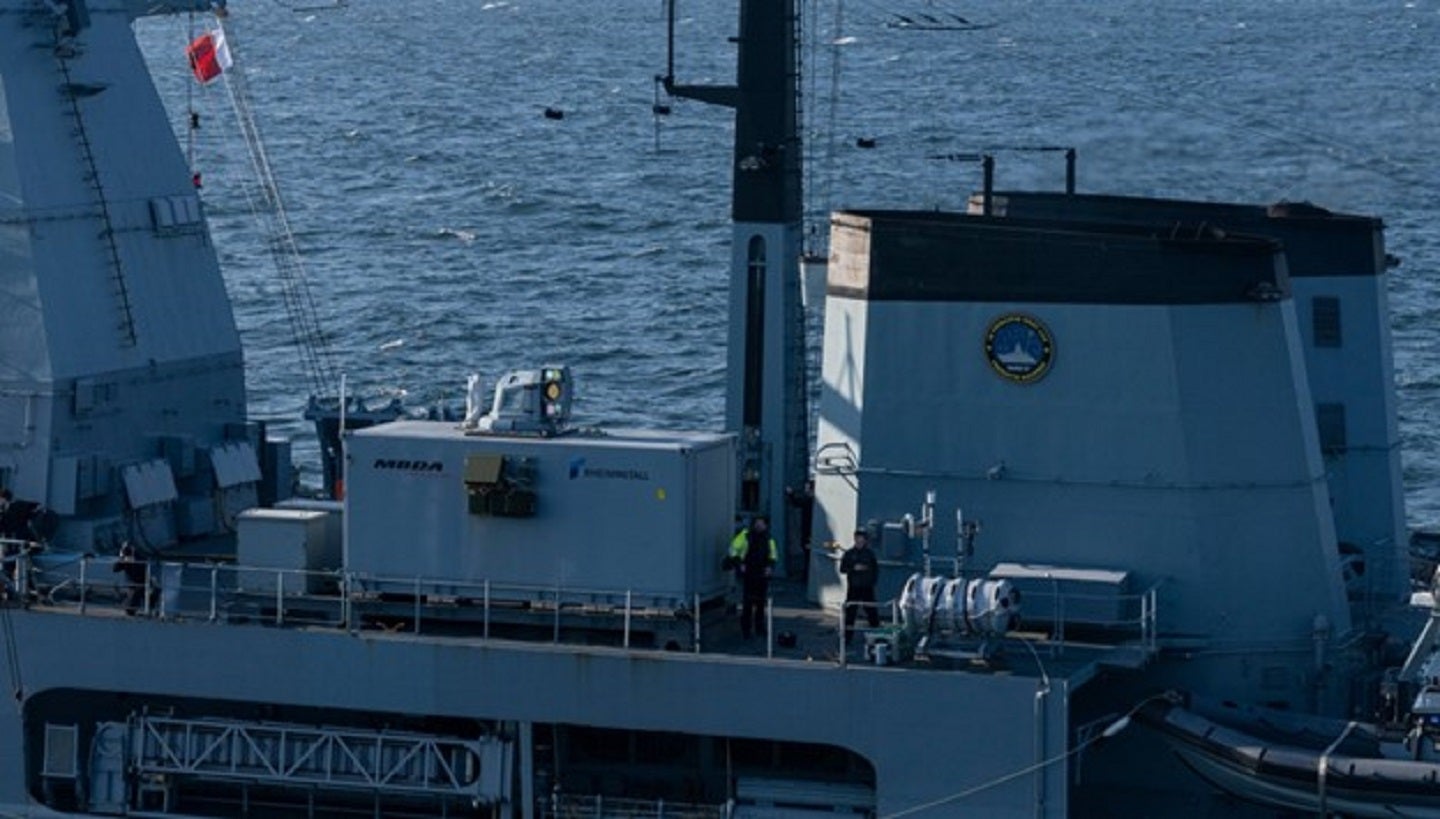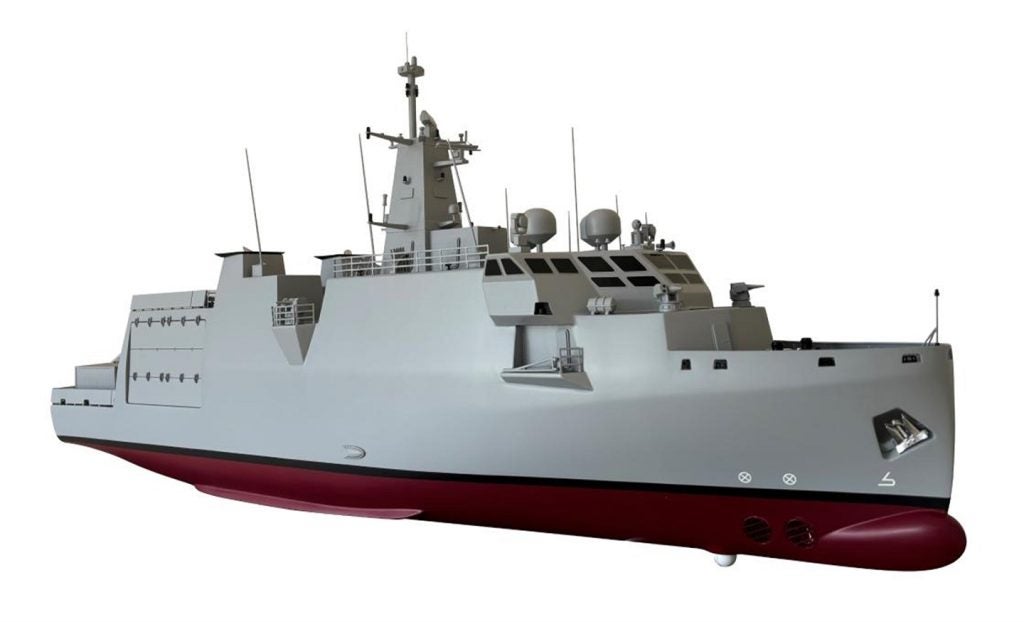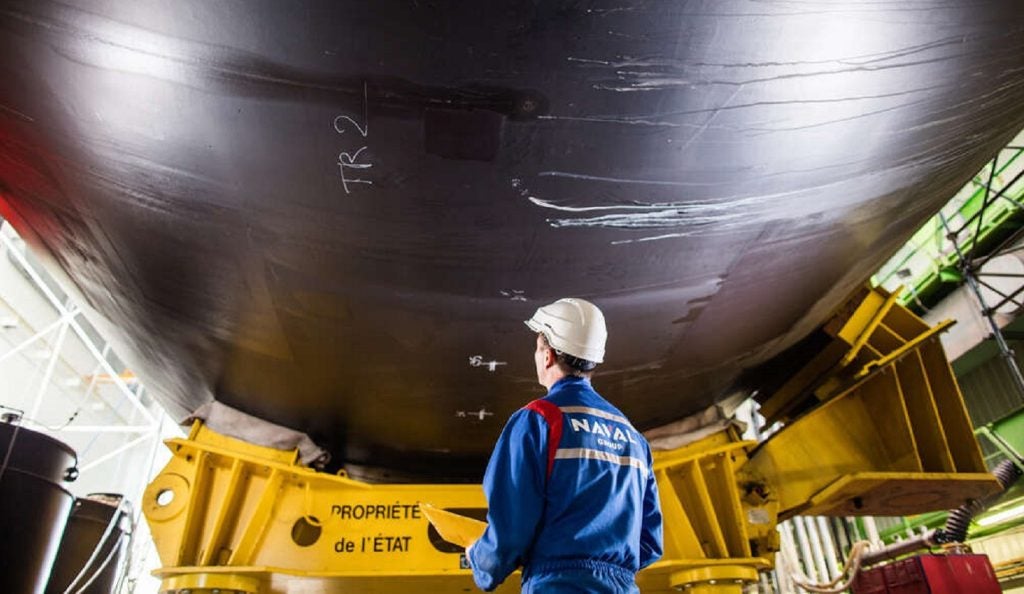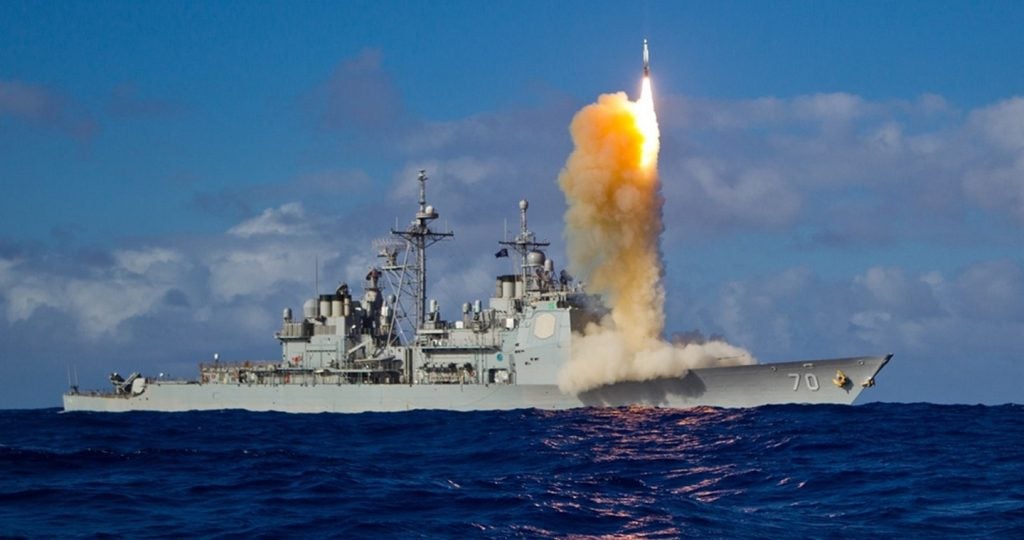
MBDA Deutschland and Rheinmetall – working together as a High-Energy Laser Naval Demonstrator Group, abbreviated in German as ‘ARGE’ – have concluded their trial of a Laser Weapon Demonstrator (LWD) onboard the German Navy frigate, FGS Sachsen (F219).
Since ARGE initially integrated the system in June 2022, and achieved the first successful test firing in the Baltic four months later, the LWD has been fired more than 100 times.
During the trials, comprising six campaigns lasting nearly a year, the LWD has proven its capability in increasingly complex scenarios, under realistic operating conditions and against different target types.
This included all LWD aspects: from detection and tracking (including highly agile targets); the interplay of sensors, command and weapon engagement systems, and effectors; possible rules of engagement; and the successful engagement of targets with a high-energy laser beam.
A new air defence capability for the Sachsen
The German military procurement office originally awarded a contract to ARGE in 2021 for the construction of a high-energy LWD for the maritime domain.
MBDA was responsible with producing the command and control and target-tracking capabilities, while Rheinmetall manufactured the laser power source, beam directors, and other niche internal components as well as overseeing the system’s integration into one homogenous weapons platform.
How well do you really know your competitors?
Access the most comprehensive Company Profiles on the market, powered by GlobalData. Save hours of research. Gain competitive edge.

Thank you!
Your download email will arrive shortly
Not ready to buy yet? Download a free sample
We are confident about the unique quality of our Company Profiles. However, we want you to make the most beneficial decision for your business, so we offer a free sample that you can download by submitting the below form
By GlobalDataARGE integrated the LWD onboard the Sachsen, a German Navy air defence frigate built by the original equipment manufacturer (OEM) Thyssenkrupp. The shipbuilder built three frigates – Sachsen (F219), Hamburg (F220) and Hessen (F221) – as part of the Sachsen class.
The OEM equipped the frigates with a combined diesel and gas propulsion system, and integrated Mk32 torpedo launchers for EurotorpMU90 lightweight torpedoes.
The Sachsen class frigates have medium and long-range anti-air missiles: the evolved Sea Sparrow and the Standard missile SM2111-A.
LWD naval applications
Leading intelligence consultancy, GlobalData, tells us that the proliferation of low-cost armed small-unmanned aerial systems (sUAS) and drone-swarming tactics have driven the development of laser-based counter-unmanned aerial systems (C-UAS).
The German Navy indicated this in a two-day VIP demonstration when the LWD system downed a unmanned aerial system (UAS).
In the same way, the recent introduction of hypersonic missiles into the global threat matrix has led some observers to consider the potential of Directed Energy Weapons (DEW) as an effective countermeasure to this emerging technology.
This is not the first time laser weapon systems have bene used at sea: the US Navy has operated the Long-Range Acoustic Device (LRAD) to protect shipping lanes around the Iraqi port of Basra and nearby oil terminals during the Second Gulf War.
Contrariwise, the exact specifications of the German Navy’s LWD – its power output, range, and other operational metrics – remain classified for the moment.
Rheinmetall’s DEW experience
Rheinmetall has a decade-long experience developing several high-energy laser concepts for the Bundeswehr. These programmes may share the same technologies used on the LWD system.
The Oerlikon Skyshield C-UAS system which employed coherent beam combining to enable several modules equipped with 10kW fiber lasers to produce an almost unlimited (100kW in testing) power output and thus induce significant thermal damage to targets.
Rheinmetall also unveiled a maritime ‘Gatling laser’ concept in 2015, in which a beam combined with four 20kW laser transmitters produces an 80kW high-energy laser beam capable of destroying small targets such as mortar shells and UAS platforms at ranges of up to 500m.
Based on this evidence, we can deduce that the new maritime laser weapon systems will likely follow the same design and operations principles, utilising coherent beam combining on several smaller-output fibre solid state lasers to produce a powerful laser beam capable of inflicting thermal damage to targets such as mortar shells, UAS platforms and most likely small surface vessels which could pose a threat to German naval vessels.







